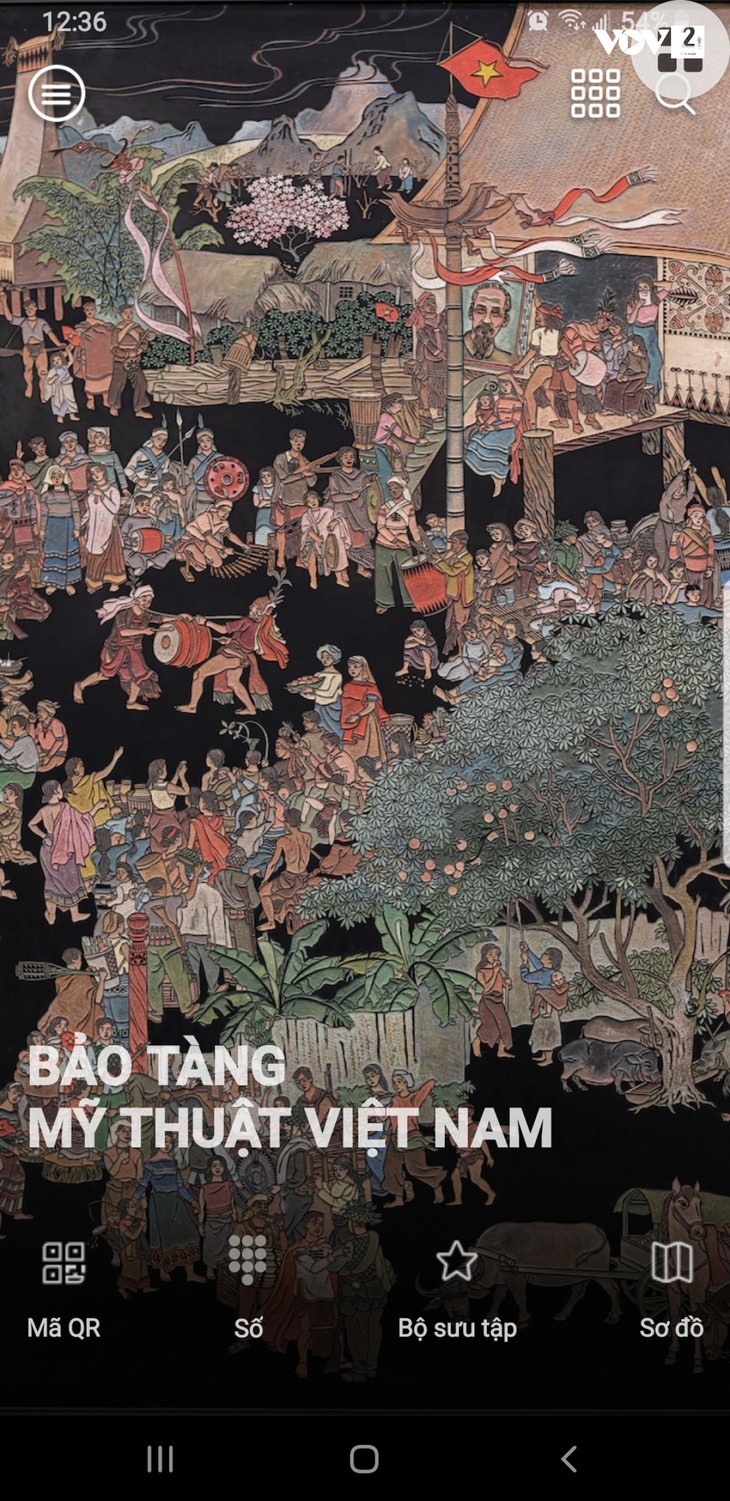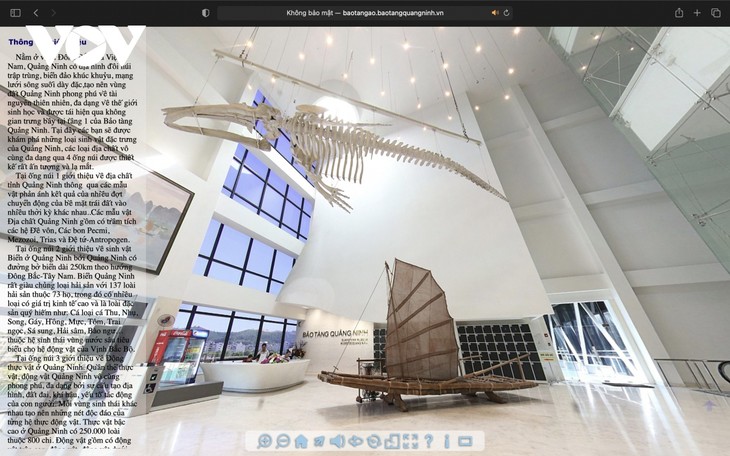(VOVWORLD) - Digitalization of museums is a global trend as all things are turning to cyberspace. It is a way for museums to store and display their holdings for the future in a multidimensional virtual space. Vietnamese museums are also turning to digitalization in order to make their collections more accessible to the public.
iMuseum, an application on smart devices, is being used by the Vietnam Fine Arts Museum to give visitors a superior experience. For only 2 USD for 8 hours access, the user opens the iMuseum app on his smart phone and scans the QR code on the artifacts displayed at the museum.
Specific information about the objects will be available in both written and audio versions. Without a tour guide, visitors can completely manage their journey and access precise and succinct information about the items they are interested in.
 The interface of iMuseum used at the Vietnam Fine Arts Museum. The interface of iMuseum used at the Vietnam Fine Arts Museum. |
Tran Dang Khoa is a post-graduate student at the University of Social Sciences and Humanities of the Vietnam National University – Hanoi. “The most convenient thing is that when we use the iMuseum app, we can access very detailed information of each artifact. Previously, we had to spend a lot of time searching printed monographs to get enough information,” said Khoa.
But the Vietnam Museum of Fine Arts is not just developing multimedia applications to integrate audio, text, and high quality images for users to see the exhibits online on their smart devices. It has also upgraded the website vnfam.vn towards digitalization to better connect with the public. Digitization enables people nationwide and from all over the world to view and learn about the items without having to travel to the museum itself.
Nguyen Anh Minh, Director of the Vietnam Museum of Fine Arts, said, “This multimedia application provides high quality images and audio. We offer visitors many ways to approach the items at our museum. With 8 languages tourists from many countries can access our holdings.”
A number of other museums in Vietnam have also created 3D tours on their websites, organized online displays, and offered audio narration to visitors. Vu Thi Tuyet Nga, Deputy Director of the Dien Bien Phu Historical Victory Museum, said that the museum is digitizing collections to reach the larger audience. It has step by step built a database of artifacts and interactive programs with tourists, she said.
“The Dien Bien Phu Historical Victory Museum stores and displays objects and documents of the triumphal victory that shook the world. We have paid special attention to the facilities and information technology application to preserve and introduce the values of the Dien Bien Phu victory to a large number of people inside and outside Vietnam,” Nga said.
 Virtual exhibitions on Quang Ninh Museum's website baotangquangninh.vn enhance visitors' experience. (Photo: VOV) Virtual exhibitions on Quang Ninh Museum's website baotangquangninh.vn enhance visitors' experience. (Photo: VOV) |
The Quang Ninh Museum in Ha Long City has also designed 3D tours to make their exhibits available online for the public. Nguyen Sy Ngoc is Head of the Information Technology Department of the Quang Ninh Museum.
“Visitors to the Quang Ninh Museum can explore our virtual museum. We plan to establish a smart museum which allows visitors to buy e-tickets and access more information about the exhibits,” said Mr. Ngoc.
Currently, there are about 200 private and public museums across Vietnam, which are gradually turning to digitalization. Not only central museums but provincial museums also have changed their mindsets on the importance of digitalization.
Digitalization and IT application in museums have brought remarkable results. The Vietnam Fine Arts Museum said that in just 3 months of deploying the iMuseum app during the early stage of COVID-19 pandemic, it welcomed 8,000 online visitors, equal to the number of offline guests in the previous year.
It proves that digital technology can increase connection with the community and attract more tourists, especially foreigners.